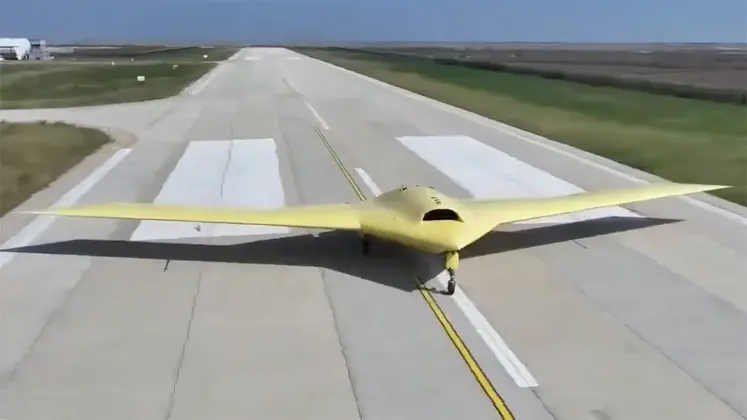<p >China’s long anticipated CH-7 unmanned long range stealth bomber has for the first time been revealed, with the publication of the first footage of the new aircraft closely coinciding with the upcoming <a href=" target="_blank">Zhuhai Air Show </a>where a number of new aerial warfare assets have been unveiled. A video and supplementary images showed one of the aircraft on a runway, with the airframe thought to be a prototype or pre-production model. Developed by the China Aerospace Science and Technology Corporation (CASC) 11th Research Institute, the aircraft uses a flying wing design, and was developed to penetrate enemy airspace at very high altitudes to engage targets using precision guided bombs. The new unmanned aircraft has the potential to revolutionise Chinese long range bomber capabilities, with the country’s bomber fleet currently reliant on enhanced versions of the <a href=" target="_blank">H-6 bomber </a>that are deployed primarily as missile carriers, and lack the stealth capabilities needed for penetration missions.&nbsp;</p><p ><img src=" title="CH-7 Unmanned Bomber"></p><p >With a 26 meter wingspan, the CH-7 is smaller than the H-6 which has a 33 meter wingspan, and significantly smaller than the American B-2 intercontinental range stealth bomber which has a 52 meter wingspan. Although smaller, the lack of a need for a cockpit and life support systems, which can be particularly large to accommodate long range bomber missions, makes the design more efficient and allows it to carry much more ordinance internally as a proportion of its size compared to manned bombers. A larger and longer ranged counterpart to the CH-7, the <a href=" target="_blank">H-20</a> intercontinental range stealth bomber, is currently in the advanced stages of development, and has been speculated to have both manned and unmanned variants. With the two aircraft expected to share many significant design features, experience flight testing and operating the CH-7 could help accelerate the development of the H-20.</p><p > </p><p >The implications of the CH-7’s development are highly significant for the balance of power in the Pacific, with no other states known to field remotely comparable aircraft. The unmanned bombers will place significantly greater strain on the defences of Western Bloc and allied military facilities from Tokyo Bay and Okinawa to Guam and Wake Island, complementing advances in China’s naval, aerial and surface based missile strike capabilities with an unprecedentedly potent stealth bomber capability.&nbsp;China’s decades of experience developing advanced stealth aircraft, most notably its<a href=" target="_blank"> J-20 fifth generation fighter</a> which had entered service in increasingly capable new variants since 2017, places the country’s defence sector in a strong position to operationalise the CH-7 as a truly cutting edge stealth bomber.&nbsp;</p>
China Unveils Unmanned Stealth Bomber with 15 Hour Flight Range: A Precursor to the H-20

